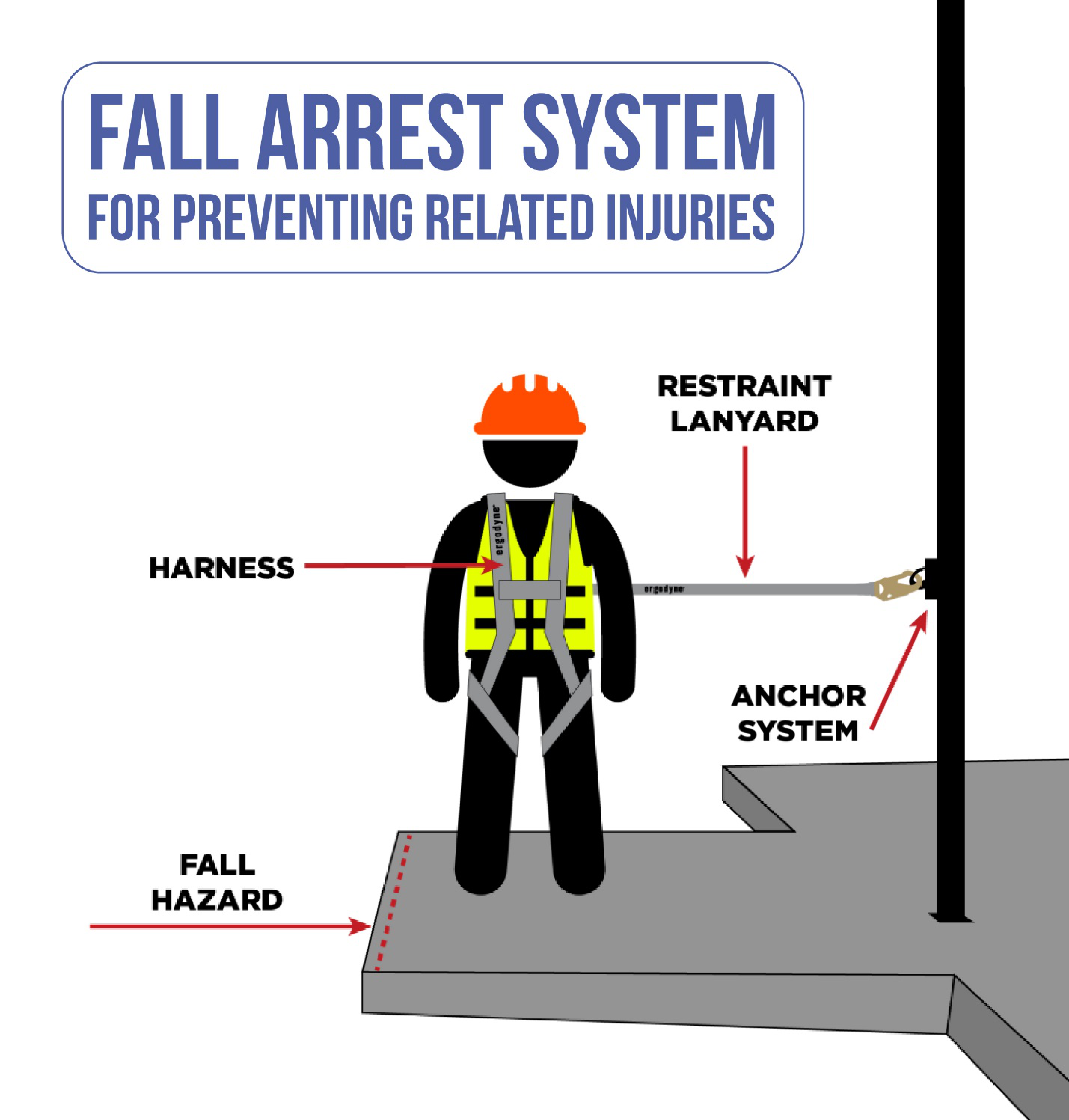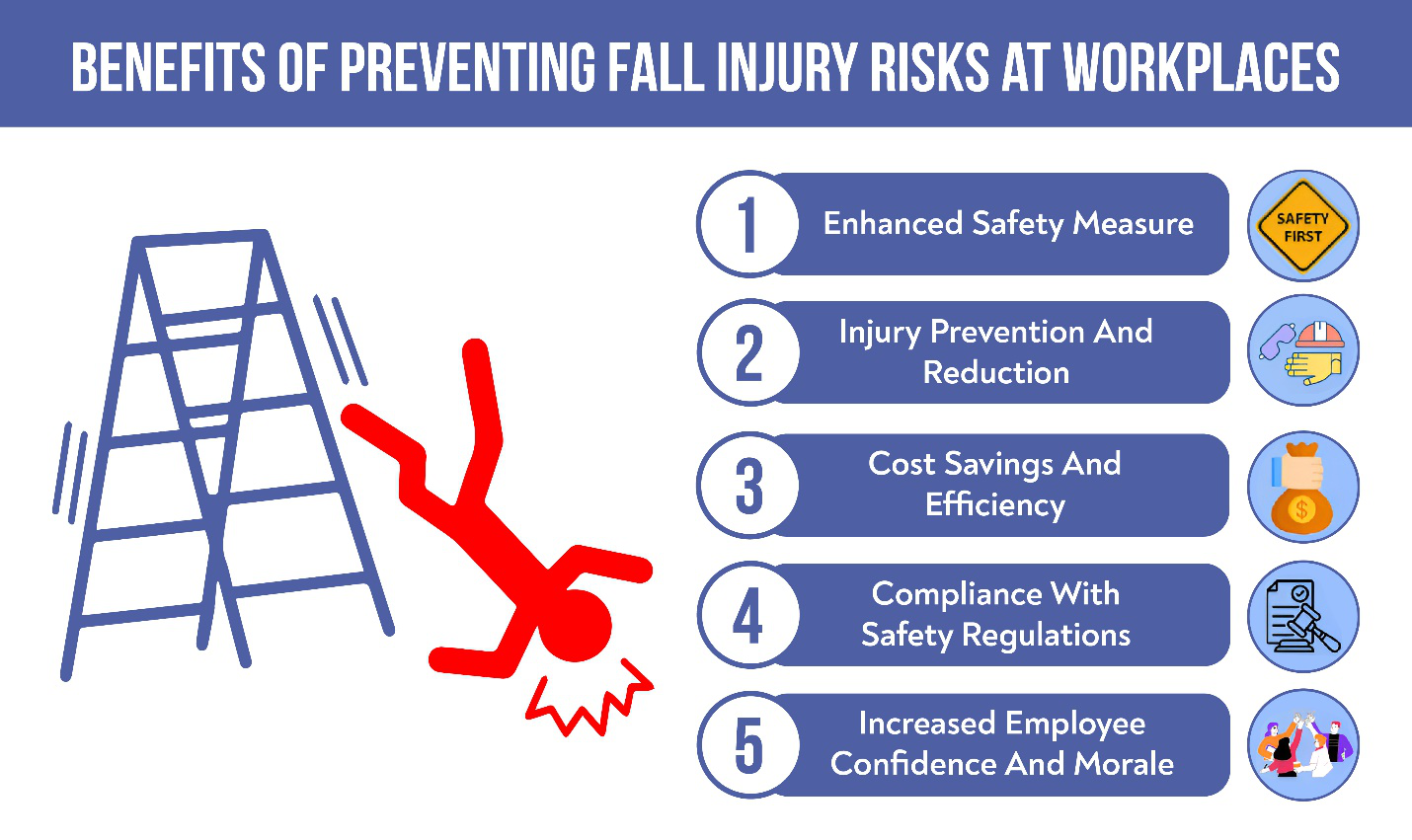Workplace safety, particularly in environments where falls pose a significant hazard, is a critical concern for employers and workers alike. Falls are one of the leading causes of workplace injuries and fatalities, making fall protection an essential component of occupational safety.
This blog highlights the importance of fall protection training, with a special focus on high-risk prevention.
Understanding Fall Hazards and Their Impacts
Falls are a prevalent hazard in many industries, particularly in construction, manufacturing, and warehousing. They can result from a variety of factors, including unstable working surfaces, poor weather conditions, and inadequate use of fall protection equipment. In Canada, falls from heights are among the most common causes of serious work-related injuries and deaths.
Common Causes of Workplace Falls
The primary causes of falls in the workplace include:
- Unprotected edges:Workers who operate near open edges without guardrails or other protective measures are at a higher risk of falling.
- Poorly maintained equipment:Equipment that is not regularly inspected and maintained can fail, leading to accidents.
- Lack of training:Workers who have not received adequate fall protection training in BC are more likely to make errors that lead to falls.
- Environmental factors:Slippery surfaces, poor lighting, and inclement weather can contribute to fall risks.

Statistics on Fall-Related Injuries and Fatalities
According to recent data, falls from heights account for approximately 20% of all workplace fatalities in Canada. In British Columbia alone, hundreds of workers suffer fall-related injuries each year, underscoring the need for robust safety protocols and comprehensive training programs.
Importance of a Comprehensive Fall Protection Safety Plan
A well-designed fall protection safety plan is crucial for preventing accidents and ensuring the safety of workers at height. This plan should include:
- Risk assessments to identify potential fall hazards
- Selection and use of appropriate fall protectionsystems
- Training for workers on the proper use of equipment and safety procedures
- Regular inspections and maintenance of fall protection systems
The Evolution of Fall Protection Training
Traditional fall protection training has typically focused on theoretical knowledge and basic skills, such as harness fitting and the use of fall arrest systems. While these components are essential, they often fall short of preparing workers for the complexities of real-world scenarios.

Traditional Methods vs. Modern Approaches
Traditional training methods often rely on classroom instruction and basic practical exercises. However, these approaches may not fully engage workers or provide them with the hands-on experience needed to respond effectively in an emergency. Modern approaches to fall protection training in BC are increasingly incorporating technology and simulation-based learning to enhance training outcomes.
In British Columbia, there is a growing emphasis on advanced fall protection training that goes beyond the basics. This training includes high-risk scenario simulations that mimic the challenges workers may face on the job. These simulations are designed to improve decision-making, situational awareness, and response times in emergencies.
The Role of Simulation-Based Training in Enhancing Safety
Simulation-based training is a powerful tool for improving safety outcomes. By replicating real-world scenarios, simulations provide workers with the opportunity to practice their skills in a controlled environment. This hands-on experience is invaluable in helping workers develop the confidence and competence needed to handle high-risk situations.
Types of High-Risk Scenario Simulations
High-risk scenario simulations involve the use of advanced training tools and techniques to create realistic fall protection scenarios. These simulations can include:
- Virtual reality (VR) environments that immerse workers in simulated work sites
- Physical mock-ups of work areas with fall hazards
- Online exercises that simulate emergency situations
How High-Risk Scenario Simulations are a Game Changer in Training
High-risk scenario simulations are an innovative approach to fall protection training. These simulations replicate the conditions and challenges workers might encounter on the job, allowing them to practice their response to fall hazards in a safe and controlled setting.
How Simulations Mimic Real-World Fall Hazards
Simulations are designed to replicate the specific hazards workers may encounter in their daily tasks. For example, a construction worker might participate in a simulation that involves working on a scaffold at height, while a warehouse worker might practice using fall protection equipment while operating a forklift.
These simulations are designed to test workers’ ability to:
- Identify potential fall hazards
- Use fall protection equipment correctly
- Respond to emergencies, such as a fall from height
The Psychological and Physical Benefits of Workplace Safety Training
High-risk scenario training offers several benefits over traditional training methods. Psychologically, they help workers build the confidence needed to respond effectively in real-world situations. Physically, they provide the experience needed to develop muscle memory and fine-tune their skills.

Research has shown that workers who participate in scenario-based training are more likely to retain the knowledge and skills they have learned. This is because simulations engage multiple senses and require active participation, which enhances learning outcomes.
Implementing High-Risk Scenario Simulations in Training Programs
To maximize the effectiveness of high-risk scenario simulations, it’s essential to integrate them into comprehensive fall protection training in BC. This program should include both theoretical instruction and practical exercises to ensure that workers are fully prepared to handle fall hazards.
Incorporating Confined Space Safety Plans into Fall Protection Training
Fall protection training should also incorporate confined space safety plans, particularly in industries where workers may be required to enter confined spaces. Confined spaces pose unique fall hazards, and workers must be trained to recognize these hazards and respond appropriately.
Integration of First Aid Training Courses in Surrey for Comprehensive Safety
A comprehensive fall protection training program should also include first aid training courses in Surrey. This training is essential for preparing workers to respond to fall-related injuries, particularly in high-risk environments.
Basic first aid and intermediate first aid training in Vancouver should be integrated into the training program to ensure that workers have the skills needed to provide immediate assistance in the event of a fall. This can include everything from performing CPR to stabilizing a victim until emergency services arrive.

Overview of the Latest Fall Protection Equipment
The field of fall protection is constantly evolving, with new technologies and equipment being developed to enhance worker safety. Some of the latest innovations in fall protection equipment include:
- Self-retracting lifelines (SRLs):These devices automatically retract and extend as the worker moves, keeping the lifeline taut and reducing the risk of tripping or entanglement.
- Anchorage connectors:These devices provide secure attachment points for fall protection systems and are designed to be easy to install and use.
- Full-body harnesses:Modern harnesses are designed for comfort and ease of use, with features like padded straps and quick-connect buckles.

Training on the Proper Use of Advanced Equipment
It’s essential that workers receive proper training on the use of advanced fall protection equipment. This training should include hands-on practice with the equipment, as well as instruction on how to inspect and maintain it. Workers should also be trained to recognize when equipment needs to be replaced or repaired.
Building a Culture of Safety Through Training
Creating a culture of safety in the workplace is essential for preventing falls and other accidents. This culture should be built on a foundation of comprehensive training, regular safety meetings, and ongoing communication between workers and management.
How High-Risk Simulations Foster a Safety-Oriented Mindset
High-risk scenario simulations are an effective tool for building a safety-oriented mindset among workers. These simulations help workers develop the skills and confidence needed to recognize and respond to fall hazards, which in turn fosters a culture of safety in the workplace.
Standard First Aid (SFA) and Emergency First Aid (EFA) and CPR should be an integral part of any fall protection training program. These skills are essential for responding to fall-related injuries and can make the difference between life and death in an emergency.

Ensuring Compliance with Industry Standards and Regulations
Compliance with industry standards and regulations is essential for maintaining a safe work environment. Employers should ensure that their fall protection programs meet all applicable regulations, including those set by WorkSafeBC and other relevant authorities. Regular audits and inspections should also be conducted to ensure ongoing compliance.
Enhance your team’s safety with our advanced fall protection training at Metro Safety Training. Our state-of-the-art high-risk scenario simulations prepare your workers for the challenges they may face on the job, ensuring they are equipped with the skills and knowledge needed to prevent falls and respond effectively in an emergency. Contact us today to learn more about our comprehensive training programs in BC tailored to your industry’s needs.







